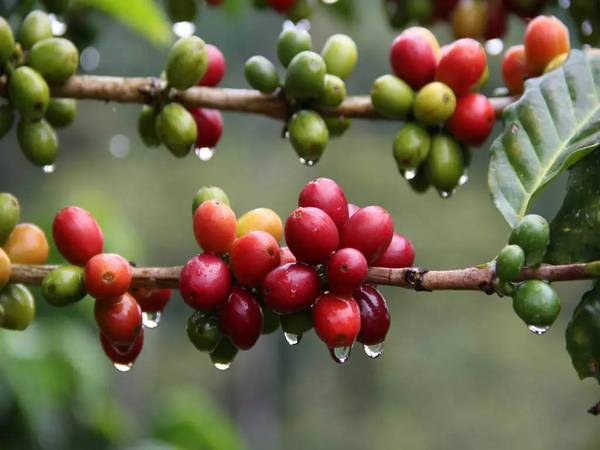Do you know what micro-batch coffee beans mean? Talent interpretation: what is a micro batch of coffee beans?

Professional coffee knowledge exchange more coffee bean information please follow the coffee workshop (Wechat official account cafe_style)
Do you really know anything about coffee from micro-batches?
What is a microbatch?
Is to further select the beans with the best performance from a batch of beans that have already performed well.
In the simplest terms, "Microlots" is to select the best beans from a batch of beans that have already performed well.
You can think of it as a differentiation strategy, picking out the better parts before entering the market, so that the profit of selling can be higher. On the one hand, it meets the increasingly picky taste buds of the single-product coffee industry, on the other hand, it also helps farmers produce coffee beans to enter the boutique coffee market and establish their own high-quality image.

Just imagine, coffee of uneven quality can only be sold at a lower price, so is it a pity not to pick out the ones of higher quality?
The method of "picking out" micro-batches
There are many ways to "pick out" micro batches, for example, because today's weather is better, especially to separate today's coffee beans from others, or because a farmer is better at fertilizing, so separate his production from that of others, and so on. It can also be a special requirement today to take only ripe fruit, and then use double labor to pick out impurities and defective products; it can even be a high-risk attempt, such as deciding whether to change to other varieties with better flavor.
There is no definite method for micro-batch, but only through constant attempt and the cooperation of everyone can we find the really good quality. In an ideal state, such persistence and pursuit can make technological improvement continue, and even drive the whole to improve together.

Micro-batches are not alone by producers. In foreign countries, many coffee makers or agricultural technology guidance organizations are trying to use micro-batches and other methods to help farmers improve production quality and open up the market. Since micro-batches are built on the premise of "better quality", professionals who understand flavor testing, that is, cup testers, are needed to check and evaluate. As for the score of the cup test before it can be regarded as having a micro-batch level, it is up to each place to set its own.
The "Red Cherry Project (Operation Cherry Red)", which began in 2007, is the high quality produced by Dutch traders who are responsible for providing technology, capital and flavor testing, while farmers are selected again and again to consolidate everyone's efforts. Projects such as Red Cherry have in turn led to the direct rise of an entire producing area, such as Sidamo Capedo, which can be said to be an example of the positive impact of micro-batches.
In fact, whether micro-batch can become a long-term and sustainable production mode that really benefits producers has always been the focus of many people's attention. In order to maintain high quality, it takes more effort and effort, and frankly speaking, not all producers in every region can afford it. Considering from this direction, micro-batch is not a method that can be applied in every production area.

When everyone wants to grow good coffee and want to be selected into micro-batches, the gap between technology and information makes many farmers do not know how to grow good coffee, or how to grow good coffee every year. Therefore, how to make micro-batch is not only a "accidental luck", but also how to make good technology take root locally and spread out in the production area is a topic that many people are working hard at present.
On other levels, the reason why many co-operatives sell coffee beans mixed with different members is to maintain fairness in external bargaining and to avoid quarrels between some selling well and others selling poorly. After all, centripetal force is a very important issue for production organizations. In addition, the production of micro-batches is usually not too large, so although the price is better, it is more difficult to become the main source of profits.
One side should have a better price and the other side should have a better flavor. It takes more time to find, improve and verify the exact landing point between the two sides.
Perhaps we can regard micro-batches as the product of demand at both ends of production and consumption; one side should have a better price, the other side should have a better flavor, the two sides happen to land, and more time is needed to find, improve and verify. At the same time, as we said in our introduction to environmental sustainability and certification, it may be too romantic to expect any single solution to emerge and solve all the problems in the world right away.
Angel Manor in Costa Rica is a micro-batch, with only 85 kilograms worldwide.

In recent years, micro-processing plants in Costa Rica have sprung up like bamboo shoots after a spring rain, making more high-quality micro-batch coffee easier to understand by the market. Angel Manor, owned by the The Aguilera's brothers, is one of them.

Angel Manor Finca Angelina is located in the western valley region of West Valley, belonging to one of the Aguirette family The Aguilera's; the Aguirette family The Aguilera's has grown coffee since its parents, whose father was the first to grow coffee in the area, and planted the first coffee on a piece of land where farmers had warned that it was not suitable for growing coffee.

At present, a total of 12 brothers and sisters inherit the family business, and the third generation has joined the coffee industry one after another. Planting and taking care of coffee gardens are done by themselves. In addition to hiring several temporary workers to help pick coffee cherries during the harvest season (from the end of October to early March next year), post-processing, sun drying, storage and so on are also done by themselves. They understand that the quality of coffee represents the level of the manor and the farm, so they attach great importance to every detail. The Aguilet family not only produces excellent and delicious boutique coffee, but also sets up a football team that has achieved outstanding results in all tournaments in Costa Rica.

The production and marketing of the Aguilera family are all under their own control and the pursuit of refined production, resulting in the production of high-level coffee, won the fourth place in the excellent cup in 2007. (we also have a bean from the Aguilet family-red wine in the sun. )

This batch is the micro batch of the cheetah project [Sunshine Kadura], with a global limit of 85kg. Excellent coffee varieties encounter refined production, only to get this rare [micro-batch] boutique coffee beans.

Purchase links:
Https://item.taobao.com/item.htm?spm=a1z10.3-c-s.w4002-15673140470.9.12781b50pptaGt&id=576875478379
Important Notice :
前街咖啡 FrontStreet Coffee has moved to new addredd:
FrontStreet Coffee Address: 315,Donghua East Road,GuangZhou
Tel:020 38364473
- Prev

What does cafe mean in French? How to pronounce cafe correctly? The difference between cafe and coffee
Professional coffee knowledge exchange more coffee bean information please follow the coffee workshop (Wechat official account cafe_style) what is the difference between Coffee shop and caf? What's the difference between cafe and coffee? Caf can refer to a small restaurant serving hot food in the United States, while in continental Europe it generally refers to coffee, with cakes and Lasagne at most.
- Next

Micro-batch MICROLOT | what does micro-batch coffee bean mean? how many is micro-batch?
Professional coffee knowledge exchange more coffee bean information please follow the coffee workshop (Wechat official account cafe_style) do you really know about micro-batch origin coffee? In terms of quantity, a microbatch micro-lot usually refers to a small number of thousand units, which may be a kilogram, a kilogram, or a thousand pounds, while 10 mini-lot is 100 micro-lot and equals standar.
Related
- Beginners will see the "Coffee pull flower" guide!
- What is the difference between ice blog purified milk and ordinary milk coffee?
- Why is the Philippines the largest producer of crops in Liberia?
- For coffee extraction, should the fine powder be retained?
- How does extracted espresso fill pressed powder? How much strength does it take to press the powder?
- How to make jasmine cold extract coffee? Is the jasmine + latte good?
- Will this little toy really make the coffee taste better? How does Lily Drip affect coffee extraction?
- Will the action of slapping the filter cup also affect coffee extraction?
- What's the difference between powder-to-water ratio and powder-to-liquid ratio?
- What is the Ethiopian local species? What does it have to do with Heirloom native species?

